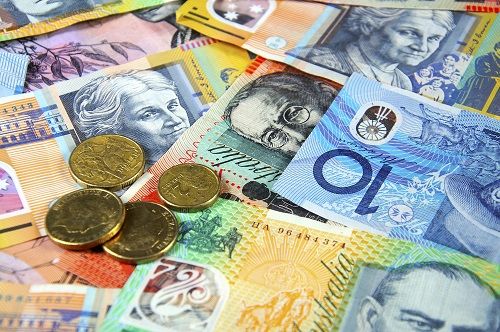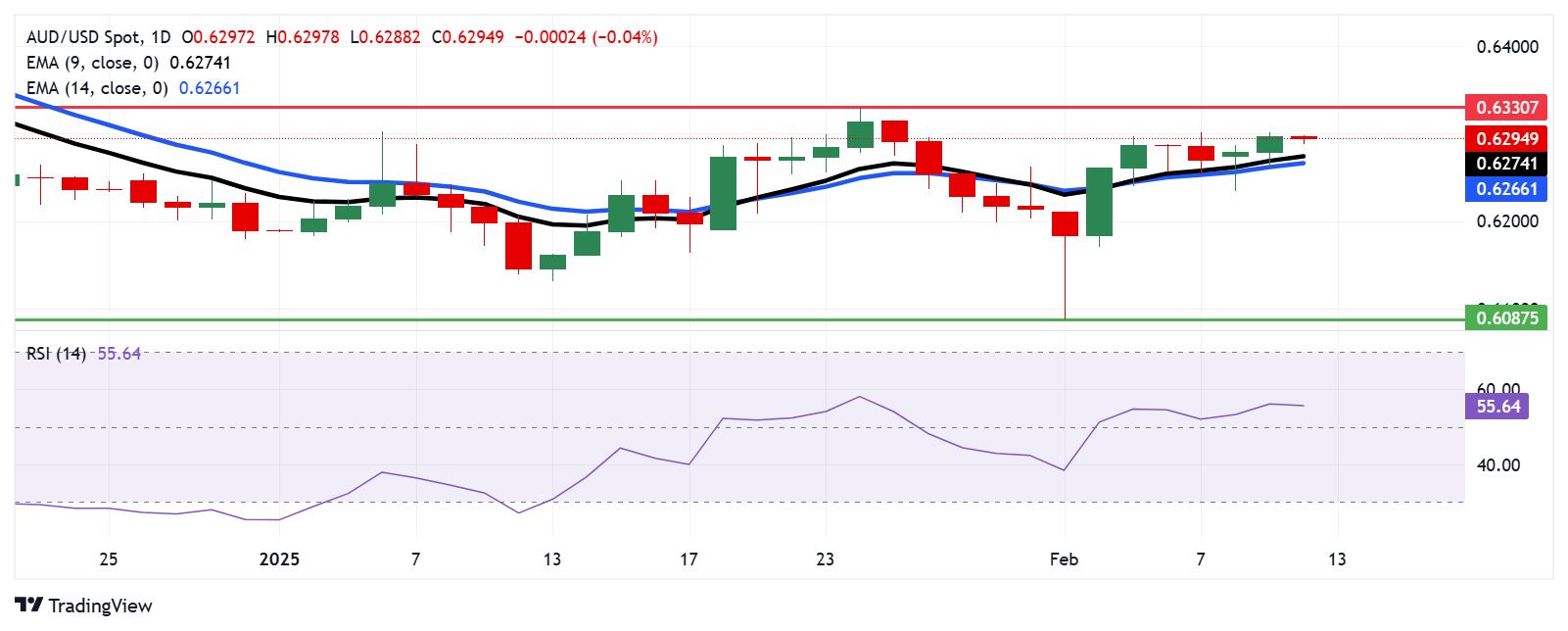Australian Dollar remains steady due to risk-off sentiment, Fed’s cautious signals

The Australian Dollar could face challenges due to rising trade tensions following President Trump’s tariff hike.
The AUD could further decline amid rising geopolitical risks as Israeli PM Netanyahu warned to end the ceasefire in Gaza.
The US Dollar may strengthen as Fed’s Powell signaled there is no urgency to cut interest rates.
The Australian Dollar (AUD) maintains its position against the US Dollar (USD) on Wednesday. However, the AUD/USD pair faced challenges due to US President Donald Trump’s 25% tariff hike and Fed Chair Jerome Powell’s indication that the central bank was in no hurry to cut interest rates further.
President Trump’s trade adviser, Peter Navarro, criticized Australia late Tuesday, accusing the country of "killing the aluminum market" just a day after Trump signed executive orders imposing import tariffs on certain metals. Australia is seeking exemptions from the new steel and aluminum tariffs, with Trump previously stating he would give "great consideration" to Australia's request due to the trade imbalance between the two nations.
Australian Trade Minister Don Farrell reiterated on Monday that Australia is pushing for a tariff exemption similar to the one it secured under Trump’s administration in 2018.
Meanwhile, geopolitical risks remain elevated. Israeli Prime Minister Benjamin Netanyahu warned late Tuesday that the ceasefire would end, and Israel would resume "intense fighting" in Gaza if Hamas did not release hostages by Saturday noon, according to the BBC.
Domestically, expectations for a Reserve Bank of Australia (RBA) rate cut are mounting. The central bank, currently holding a 4.35% cash rate, is widely anticipated to lower it at its February meeting. Traders now see a 95% probability of a cut to 4.10%, as recent data suggests underlying inflation is cooling faster than the RBA had projected.
Australian Dollar could decline amid rising odds of Fed’s hawkish stance
The US Dollar Index (DXY), which measures the US Dollar’s value against six major currencies, maintains its position near 108.00 at the time of writing.
Traders await US Consumer Price Index (CPI) inflation due on Wednesday. Headline US CPI inflation is expected to hold at 2.9% YoY, while core CPI inflation is forecast to tick down to 3.1% versus the last print of 3.2%.
In his semi-annual report to Congress, Fed’s Powell said the Fed officials “do not need to be in a hurry" to cut interest rates due to strength in the job market and solid economic growth. He added that US President Donald Trump's tariff policies could put more upward pressure on prices, making it harder for the central bank to lower rates.
A Reuters poll of economists now suggests the Federal Reserve will delay cutting interest rates until next quarter amid rising inflation concerns. Many who had previously expected a March rate cut have revised their forecasts. The majority of economists surveyed between February 4-10 anticipate at least one rate cut by June, though opinions on the exact timing remain divided.
The US Dollar receives support as the US Federal Reserve (Fed) is now expected to keep interest rates steady this year, following January’s jobs report released on Friday, which indicated slowing job growth but a lower Unemployment Rate.
US President Donald Trump decided to expand steel and aluminum tariffs by 25% to include all imports, nullifying trade agreements with key US allies, including Australia. The White House confirmed that all import tax exclusions had been removed and indicated that further action on microchips and vehicles would be considered in the coming weeks.
Federal Reserve (Fed) Bank of Chicago President Austan Goolsbee mentioned on Friday that inconsistent policy approaches from the US government cause a high level of economic uncertainty that makes it difficult for the Fed to draw a bead on where the economy, and inflation specifically, are likely heading.
Meanwhile, Fed Board of Governors member Adriana Kugler noted that US growth and economic activity remain healthy overall, but noted that progress toward the Fed's inflation goals has been somewhat lopsided, per Reuters.
In an interview with CNBC, Minneapolis Fed President Neel Kashkari said that he would move towards supporting further rate cuts if they see good inflation data and the labor market stays strong
China’s Consumer Price Index (CPI) grew at an annual rate of 0.5% in January, up from 0.1% in December and exceeding the market forecast of 0.4%. On a monthly basis, CPI inflation rose 0.7% in January, compared to December’s flat reading of 0%, though it fell short of the expected 0.8% increase.
Technical Analysis: Australian Dollar remains below 0.6300; support appears at nine-day EMA
The AUD/USD pair hovers near 0.6290 on Wednesday, maintaining its position above the nine- and 14-day Exponential Moving Averages (EMAs) on the daily chart. This suggests that short-term price momentum is stronger. Additionally, the 14-day Relative Strength Index (RSI) maintains its position above the 50 mark, reinforcing a bullish bias.
The AUD/USD pair may explore the resistance region around the eight-week high of 0.6330, last reached on January 24.
The AUD/USD pair could test primary support at the nine-day EMA of 0.6273 level, followed by the 14-day EMA of 0.6265. A decisive break below these levels could weaken the short-term price momentum, potentially pushing the pair toward the psychological level of 0.6200.
AUD/USD: Daily Chart
Australian Dollar PRICE Today
The table below shows the percentage change of Australian Dollar (AUD) against listed major currencies today. Australian Dollar was the weakest against the New Zealand Dollar.
| USD | EUR | GBP | JPY | CAD | AUD | NZD | CHF | |
|---|---|---|---|---|---|---|---|---|
| USD | 0.00% | -0.06% | 0.54% | 0.00% | -0.03% | -0.11% | -0.06% | |
| EUR | 0.00% | -0.05% | 0.52% | 0.00% | -0.04% | -0.10% | -0.06% | |
| GBP | 0.06% | 0.05% | 0.57% | 0.06% | 0.02% | -0.05% | -0.00% | |
| JPY | -0.54% | -0.52% | -0.57% | -0.53% | -0.57% | -0.65% | -0.59% | |
| CAD | -0.00% | -0.00% | -0.06% | 0.53% | -0.04% | -0.11% | -0.06% | |
| AUD | 0.03% | 0.04% | -0.02% | 0.57% | 0.04% | -0.07% | -0.03% | |
| NZD | 0.11% | 0.10% | 0.05% | 0.65% | 0.11% | 0.07% | 0.04% | |
| CHF | 0.06% | 0.06% | 0.00% | 0.59% | 0.06% | 0.03% | -0.04% |
The heat map shows percentage changes of major currencies against each other. The base currency is picked from the left column, while the quote currency is picked from the top row. For example, if you pick the Australian Dollar from the left column and move along the horizontal line to the US Dollar, the percentage change displayed in the box will represent AUD (base)/USD (quote).
* The content presented above, whether from a third party or not, is considered as general advice only. This article should not be construed as containing investment advice, investment recommendations, an offer of or solicitation for any transactions in financial instruments.



